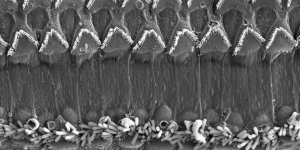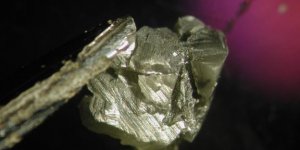| News / Science News |
‘Grow coffee in shade’ to supress leaf rust
Coffee farmers should grow the crop under shade to provide a conducive environment for a parasite that could control the fungal disease leaf rust, an expert says.

Coffee. Photo: Rodrigo Flores/Unsplash
Coffee leaf rust, caused by the fungus Hemileia vastatrix, is characterised by small yellow spots on upper leaf surfaces and orange powdery lesions on the underside of leaves. Infected leaves eventually drop off, lowering the yield and quality of the crop.
But a study conducted in Ethiopia considered the origin of Arabica coffee, known scientifically as Coffea arabica, shows that a natural enemy that grows on top of leaves infected by the disease could be key to helping farmers fight it.
“The rust is a global challenge for coffee production,” says Beyene Zewdie, a co-author of the study and post-doctoral researcher at the Department of Ecology, Environment and Plant Sciences at Stockholm University, Sweden, adding that it reduces coffee yields by up to 30 per cent.
According to the study, researchers analysed both the rust and a fungus that attacks it called Lecanicillium lecanii. Observations were carried out from 2017 to 2019 during the wet and dry seasons in Southwestern Ethiopia.
“We found that coffee leaf rust was more severe during the dry season whereas the hyperparasite [parasite whose host is also a parasite or L. lecanii] was more severe during the wet season in two out of three years,” says the study. “The rust incidence increased with management intensity while the hyperparasite was more common under less intensive management.”
“We also found a slight variation in the environmental requirement of the rust and the hyperparasite,” Zewdie tells SciDev.Net. “The rust can thrive in low moisture conditions whereas the hyperparasite favours areas characterised by moist and shaded habitats.”
Zewdie says most farmers in the study area perceive coffee leaf rust as a less important disease because although severe coffee leaf rust infestation leads to leaf-drop, coffee shrubs normally get back the leaves during the next wet season.
But he cautions that the loss of leaves can have a negative effect on the performance of the plant, and says shade would help mitigate the damage.
“Coffee needs shade and growing the crop under shade could buffer the microclimate around the coffee shrubs,” he tells. “Shade also creates a conducive environment for the coffee leaf rust hyperparasite and we need to maximise this potential to make use of the capacity of the hyperparasite to suppress the rust in areas where the two interacting species co-occur.”
Using the natural enemy to fight the disease may be preferable to fungicides which can fail to control the disease either due to poor quality or handling or resistance of the disease-causing agent to fungicide. (SciDev.Net)
YOU MAY ALSO LIKE





